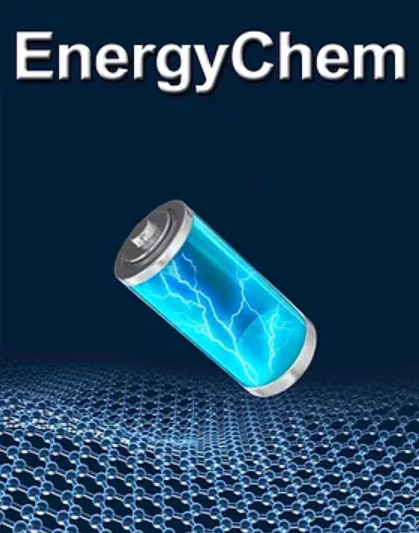PEMFC阳极耐CO铂基合金研究进展及展望
IF 22.2
Q1 CHEMISTRY, MULTIDISCIPLINARY
引用次数: 0
摘要
全球变暖和能源消耗推动了质子交换膜燃料电池(pemfc)的研究和发展,质子交换膜燃料电池是一种高能量密度、零排放的能量转换装置。目前,用于pemfc阳极氢氧化反应(HOR)的主要商业催化剂是Pt/C,而CO在pemfc阳极反应物中的存在严重影响了Pt基催化剂的效率。过渡金属的加入可以修饰pt基催化剂的电子结构,降低CO在铂表面的吸附能,从而提高对CO的耐受性。本文旨在介绍pt基合金策略在PEMFC阳极抗co中毒和HOR性能优化中的关键作用,并提供当前研究领域的概述。通过对pemfc中CO中毒机理和阳极HOR合金设计原则的论证,简要介绍了用于高效pemfc的耐CO pt基合金催化剂的研究进展。最后,展望了pt基合金催化剂商业化的未来挑战和发展方向。这篇综述为pt基合金作为增强CO耐受性和高性能pemfc有利HOR的前沿策略提供了重要见解。本文章由计算机程序翻译,如有差异,请以英文原文为准。
Recent advance and perspectives on CO tolerant platinum-based alloys in PEMFC anodes
Global warming and energy consumption have spurred the research and development of proton exchange membrane fuel cells (PEMFCs), a high-energy-density and zero-emission energy conversion device. Currently, the predominant commercial catalyst employed for hydrogen oxidation reaction (HOR) in PEMFCs anode is Pt/C, and the efficiency of Pt-based catalysts is significantly undermined by the presence of CO mixed in the PEMFCs anode reactants. The incorporation of transition metals can modify the electronic structure of Pt-base catalysts and reduce the adsorption energy of CO on the platinum surface, thereby enhancing the CO tolerance. This timely review aims to present the crucial role of Pt-based alloy strategies for anti-CO poisoning of PEMFC anodes and performance optimization for HOR, and to offer a current overview of the research field. By following the demonstration on the CO poisoning mechanisms and the alloy design principles for anodic HOR in PEMFCs, recent progress on CO-resistant Pt-based alloy catalysts for high-efficiency PEMFCs is briefly presented. Finally, future challenges and directions for the commercialization of Pt-based alloy catalysts are reviewed. This review offers the significant insights into Pt-based alloys as a cutting-edge strategy for enhanced CO tolerance and favorable HOR for high performance PEMFCs.
求助全文
通过发布文献求助,成功后即可免费获取论文全文。
去求助
来源期刊

EnergyChem
Multiple-
CiteScore
40.80
自引率
2.80%
发文量
23
审稿时长
40 days
期刊介绍:
EnergyChem, a reputable journal, focuses on publishing high-quality research and review articles within the realm of chemistry, chemical engineering, and materials science with a specific emphasis on energy applications. The priority areas covered by the journal include:Solar energy,Energy harvesting devices,Fuel cells,Hydrogen energy,Bioenergy and biofuels,Batteries,Supercapacitors,Electrocatalysis and photocatalysis,Energy storage and energy conversion,Carbon capture and storage
 求助内容:
求助内容: 应助结果提醒方式:
应助结果提醒方式:


